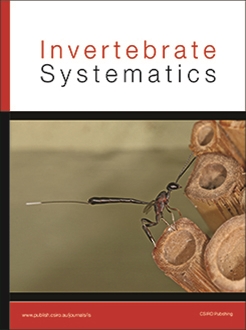The Opiliones family Neopilionidae is restricted to the terranes of the former temperate Gondwana: South America, Africa, Australia, New Caledonia and New Zealand. Despite decades of morphological study of this unique fauna, it has been difficult reconciling the classic species of the group (some described over a century ago) with recent cladistic morphological work and previous molecular work. Here we attempted to investigate the pattern and timing of diversification of Neopilionidae by sampling across the distribution range of the family and sequencing three markers commonly used in Sanger-based approaches (18S rRNA, 28S rRNA and cytochrome-c oxidase subunit I). We recovered a well-supported and stable clade including Ballarra (an Australian ballarrine) and the Enantiobuninae from South America, Australia, New Caledonia and New Zealand, but excluding Vibone (a ballarrine from South Africa). We further found a division between West and East Gondwana, with the South American Thrasychirus/Thrasychiroides always being sister group to an Australian–Zealandian (i.e. Australia + New Zealand + New Caledonia) clade. Resolution of the Australian–Zealandian taxa was analysis-dependent, but some analyses found Martensopsalis, from New Caledonia, as the sister group to an Australian–New Zealand clade. Likewise, the species from New Zealand formed a clade in some analyses, but Mangatangi often came out as a separate lineage from the remaining species. However, the Australian taxa never constituted a monophyletic group, with Ballarra always segregating from the remaining Australian species, which in turn constituted 1–3 clades, depending on the analysis. Our results identify several generic inconsistencies, including the possibility of Thrasychiroides nested within Thrasychirus, Forsteropsalis being paraphyletic with respect to Pantopsalis, and multiple lineages of Megalopsalis in Australia. In addition, the New Zealand Megalopsalis need generic reassignment: Megalopsalis triascuta will require its own genus and M. turneri is here transferred to Forsteropsalis, as Forsteropsalis turneri (Marples, 1944), comb. nov.
How to translate text using browser tools
5 November 2021
A molecular phylogeny of the circum-Antarctic Opiliones family Neopilionidae
Gonzalo Giribet,
Kate Sheridan,
Caitlin M. Baker,
Christina J. Painting,
Gregory I. Holwell,
Phil J. Sirvid,
Gustavo Hormiga
ACCESS THE FULL ARTICLE

Invertebrate Systematics
Vol. 35 • No. 8
December 2021
Vol. 35 • No. 8
December 2021
Australia
biogeography
Enantiobuninae
Eupnoi
Gondwana
New Caledonia
New Zealand





